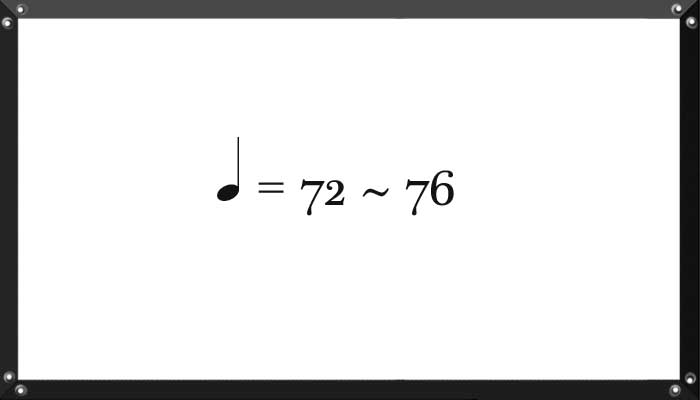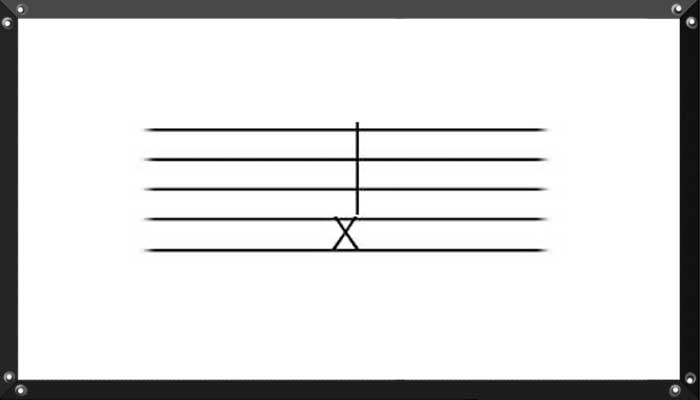

Piano Technique
Music Theory

Slower than andante. Adagietto is 72–76 bpm. Many songs from the seventies used this tempo. also hymns from church and gospel.
Don't forget these:
[326]. Larghissimo: under-24
[342]. Grave: 25-45
[360]. Largo: 40-60
[380]. Lento: 45-65
[306]. Adagio: 66-75
[402]. Adagietto: 72-76
[292]. Andante: 96-107
[194]. Moderato: 108-120
[201]. Allegro: 121-168
Songs - Level 16
Solfeo - Reading Music
Scales
Songs - Level 17
Chords
Solfeo - Reading Music
Piano Technique
Music Theory

Indicates a forward jump in the music to its ending passage, marked with the same sign. Only used after playing through a D.S. al coda (Dal segno al coda) or D.C. al coda (Da capo al coda).
Songs - Level 17
Solfeo - Reading Music
Scales
Songs - Level 17
Music Theory

A rapid alternation between the specified note and the next higher note (according to key signature) within its duration, also called a "shake". When followed by a wavy horizontal line, this symbol indicates an extended, or running, trill. Trills can begin on either the specified root note or the upper auxiliary note, though the latter is more prevalent in modern performances. In percussion notation, a trill is sometimes used to indicate a tremolo.
Chords
Solfeo - Reading Music
Scales
Piano Technique
Chords
Scales
Music Theory

Connects two or more lines of music that sound simultaneously. In general contemporary usage the bracket usually connects the staves of separate instruments (e.g., flute and clarinet; two trumpets; etc.) or multiple vocal parts in a choir or ensemble, whereas the brace connects multiple parts for a single instrument (e.g., the right-hand and left-hand staves of a piano or harp part).
Songs - Level 17
Chords
Solfeo - Reading Music
Scales
Piano Technique
Songs - Level 17
Music Theory

In music, a thirty-second note (American) or demisemiquaver (British) is a note played for 1⁄32 of the duration of a whole note (or semibreve). It lasts half as long as a sixteenth note (or semiquaver) and twice as long as a sixty-fourth (or hemidemisemiquaver).
Scales
Piano Technique
Solfeo - Reading Music
Chords
Music Theory

A related symbol is the thirty-second rest or demisemiquaver rest, which denotes a silence for the same duration.
Songs - Level 17
Piano Technique
Scales
Music Theory

A note with a rhythmic value, but no discernible pitch when played. It is represented by a (saltire) cross (similar to the letter x) for a note head instead of an oval.
Solfeo - Reading Music
Scales
Chords
Piano Technique
Music Theory

In a score, this symbol tells the performer to take a breath (or make a slight pause for non-wind instruments). This pause usually does not affect the overall tempo. For bowed instruments, it indicates to lift the bow and play the next note with a downward (or upward, if marked) bow.
Scales
After 59 exercises doing scales, finally you start to play the scales the way they are supposed to be played.
You need to play the scales with both hands at the same time
on time an a lot of repetition, up and down
If you are here, congratulations! you are doing really good and you definitly like music and wants to play better
Songs - Level 18
Chords
Solfeo - Reading Music
The question is simple. Are you happy with how much you know about reading music?
You have done 100 Solfeos, One Hundred Exercises just to show you how to read music.
Do you think you need more?
Would you like to read better, or know more rhythms or notes that you still don't know?
Then let's do another hundred more...
If you are happy and you don't want to learn more, then you have reached a good level of reading music
Scales
Music Theory

Lowers the pitch of a note by two chromatic semitones. Usually used when the note to modify is already flatted by the key signature.
Piano Technique
You have so far...
Do you want to continue learning like this?